Today’s Current Affairs: 14th aug 2023 for UPSC IAS exams, State PSC exams, SSC CGL, State SSC, RRB, Railways, Banking Exam & IBPS, etc
Table of Contents
Hydroponics Farming:

The Union Minister of Agriculture and Farmers’ Welfare informed the Lok Sabha that ICAR-Indian Institute of Horticulture Research, Bengaluru (IIHR) has developed a variant of hydroponics.
- Hydroponics Farming is a viable alternative to traditional farming methods for soil less cultivation for enhancing productivity and water use efficiency.
- Hydroponics is a new concept in India and gaining popularity among entrepreneurs and innovative farmers, who are looking for sustainable and efficient ways to grow crops.
- At present, this technology is mostly confined to urban farming, rooftop gardening and commercial farming.
- Cocoponics” or the Soilless production of vegetables, using cocopeat as a substrate, which has been found to be comparatively more successful in many vegetable crops.
Pradhan Mantri Bharatiya Jan Aushadhi Kendras : At Railway Station

Railways Ministry will establish Pradhan Mantri Bharatiya Janaushadhi Kendras at railway stations across the country.
- Pradhan Mantri Bhartiya Jan Aushadhi Kendras are set up under Pradhan Mantri Bhartiya Jan Aushadhi Pariyojana, which was launched by the Department of Pharmaceuticals, Ministry of Chemicals and Fertilizers in November 2008.
- Objective is to provide quality medicines at affordable prices for all, particularly the poor, so as to reduce out-of-pocket expenses in healthcare.
- They provide generic drugs, which are available at lesser prices but are equivalent in quality and efficacy as expensive branded drugs. All therapeutic medicines are made available from Jan Aushadhi Stores.
- Jan Aushadhi stores also sell allied medical products commonly sold in chemist shops so as to improve the viability of running the Jan Aushadhi store.
- Pharmaceutical & Medical Devices Bureau of India (PMBI) has been established under the Department of Pharmaceuticals, Govt. of India, with the support of all the CPSUs for co-coordinating procurement, supply, and marketing of generic drugs through the PMBKs.
Legionnaire’s Disease : Severe Form Of Pneumonia
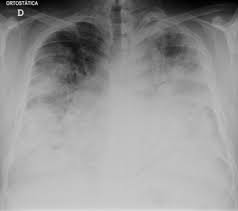
British government’s initiative to put asylum-seekers on a housing barge suffered as Legionella bacteria were found on the barge.
- Migrants are removed from the Bibby Stockholm barge after traces of the bacteria causing Legionnaire’s disease were found in the onboard water system.
- Legionnaire’s disease is a severe form of pneumonia lung inflammation usually caused by infection.
- It’s caused by a bacterium known as legionella.
- This bacterium is found in lakes and ponds, but they can also develop in tanks and other water systems.
- The most common form of transmission of Legionella is inhalation of contaminated aerosols from contaminated water.
- The main symptoms are fever, chills, headache, malaise and muscle pain (myalgia).
- Treatments exist, but there is no vaccine currently available for Legionnaires’ disease.
Indian Flying Fox Bat : Recent Study
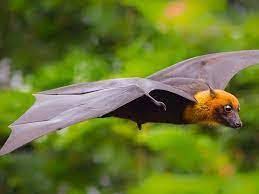
A new study found that India’s largest species of bats, Indian Flying Fox bat spends 7% of its day-roosting time being environmentally vigilant.
- Indian Flying Fox bat is a species of flying fox native to the Indian subcontinent. It is one of the largest bats in the world.
- The nectar and fruit-eating flying fox (Pteropus giganteus) is generally considered vermin as they raid orchards.
- It is a keystone species causing seed dispersals of many plants in tropical systems.
- The Indian flying fox is so called due to its unique, fox-like appearance: reddish-brown coat, characteristically long snout as well as large eyes. And indeed, this animal resembles a little fox with wings.
- These bats are endemic to South Central Asia, found from Pakistan and China to the Maldives Islands.
- It is highly social creatures, forming large roosts of several hundred animals.
- These bats live in a ‘vertical’, male-dominated hierarchy system, where higher-ranked individuals occupy higher spots of the tree, while lower-ranked individuals remain on lower spots.
- They maintain a frugivorous diet, supplementing it with insects as well as flowers, containing juice and nectar.
- Being external roosters, the flying fox is exposed to predators and disturbances apart from environmental indicators such as heat and light.
- Conservation status
- IUCN: Least concern
- The Wildlife (Protection) Act of 1972: Schedule II
Chronic Obstructive Pulmonary Disease:
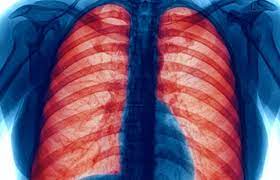
According to a recent study published, patients with low levels of vitamin K in their blood are more likely to have reduced lung function and suffer from asthma and chronic obstructive pulmonary disease (COPD).
- COPD is a common lung disease causing restricted airflow and breathing problems.
- There are two main forms of COPD.
- Most people with COPD have a combination of both conditions.
- Chronic bronchitis, which involves a long-term cough with mucus.
- Emphysema, which involves damage to the lungs over time.
- Causes: It’s typically caused by long-term exposure to irritating gases or particulate matter, most often from cigarette smoke.
- The most common symptoms of COPD are difficulty breathing, chronic cough (sometimes with phlegm) and feeling tired.
- COPD symptoms can get worse quickly. These are called flare-ups. These usually last for a few days and often require additional medicine.
- People with COPD are at increased risk of developing heart disease, lung cancer and a variety of other conditions.
- COPD isn’t curable, but it can get better by not smoking, avoiding air pollution and getting vaccines.
- It can be treated with medicines, oxygen and pulmonary rehabilitation.
National Automated Fingerprint Identification System:

Union Home Minister recently congratulated the team of the NAFIS of NCRB for winning the Gold Award under the Excellence in Government Process Reengineering for Digital Transformation from the of Department of Administrative Reforms and Public Grievances.
- The NAFIS is a pan-India searchable database of crime and criminal-related fingerprints.
- It is managed by the National Crime Records Bureau (NCRB) at the Central fingerprint bureau, based in New Delhi.
- The main objective of the web-based application is to collect fingerprint data of all the criminals from all the states and the Union Territories.
- It will enable law enforcement agencies to upload, trace and retrieve information from the database 24×7 in real-time.
- NCRB enables law enforcement agencies to upload, trace, and retrieve data from the database.
- Within 24 hours, NAFIS provides a unique 10-digit National Fingerprint Number (NFN) to each criminal who is arrested for the crime.
- The unique ID will be used for a lifetime of an offender. Different crimes registered under different FIRs will be logged as incidents belonging to the same NFN.
- The first two digits of the ID will be the state code of the state where the criminal is registered, followed by a sequence number.
- The state partition will have IDs belonging to a state.
- Apart from this, a digital record will be added as storage to match the fingerprints in the future.
- With NAFIS, it is possible to locate a person of interest in a matter of minutes and connect that individual’s name to any active warrants, warnings, or information about related criminal conduct stored in other police information reference systems.
Nawegaon-Nagzira Tiger Reserve : Young Male Tiger Recently Died

A young male tiger recently died in a road hit near Murdoli village in the buffer zone of the Nawegaon-Nagzira Tiger Reserve in Maharashtra.
- Nawegaon-Nagzira Tiger Reserve is situated in Gondia and Shahdara District of Maharashtra. It comprises Nawegaon National Park, Nawegaon Wildlife Sanctuary, Nagzira Wildlife Sanctuary, New Nagzira Wildlife Sanctuary and Koka Wildlife Sanctuary.
- It is connected with many surrounding tiger reserves like Pench, Kanha, Tadoba Andhari Tiger Reserve, Indravati Tiger Reserve etc.
- Southern Tropical Dry Deciduous Forestwhich includes dry mixed forests to moist forest type.
- There are 364 species of plants and the major trees are: Terminalia tomentosa, Lagerstroemia parviflora, Anogeisus lotifolia, Pterocarpus marsupium, Diospyrus melanoxylon, Ougeinia oogenesis etc.
- The major wild animals are: Tiger, Panther, Small Indian Civet, Palm Civet, Wolf, Jackal, Wild Dog, Sloth Bear, Ratel, Common Giant Flying Squirrel, Gaur, Sambar, Chital, Four Horned Antelope, Mouse Deer and Pangolin.
Tribal Populations Health Conditions : Lacking Data
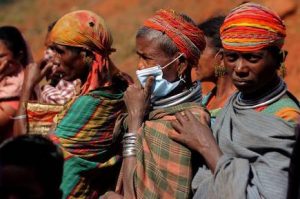
A Parliamentary Committee (on the empowerment of women) tabled a report criticizing the Union government for lacking disaggregated data on tribal populations’ health conditions and emphasized the need for comprehensive data collection.
Highlights of the Report:
- The report highlights the absence of detailed data on the health conditions of tribal populations in the country.
- Early marriage in tribal women causes early pregnancy and other general health risks.
- The report highlights how tribal women suffer from malnutrition, a high infant mortality rate (over 41%), and communicable diseases like malaria, tuberculosis etc (NHFS-5)
- More than half of tribal women of reproductive age suffer from anaemia
- An online portal is being established for tribal people to register for diseases, allowing targeted interventions.
- However, the committee critiques the online portal and suggests setting up self-help kiosks for easier registration.
CAG Report On Railway Finance:

The Comptroller and Auditor General (CAG) reported that in the fiscal year 2021-22, the financial health of Indian Railways entered a “concern zone.”
Key findings of the CAG:
- The railway operator spent ₹107 to earn ₹100 due to increased pension funding
- Indian Railways couldn’t generate a net surplus in 2021-22
Total Expenditure increased over 35% more than the previous year. - Over 75% of total working expenses are spent on staff costs, pension payments, and rolling stock lease charges
Dependence on Budgetary Support and Resources Inadequate internal resource generation led to greater dependence on Gross Budgetary Support (GBS) and Extra Budgetary Resources (EBR) - Passenger fares subsidized by profits from freight operations
Index Of Industrial Production:

India’s Index of Industrial Production in India declined to a three-month low of 3.7 per cent in June, mainly due to poor showing by the manufacturing sector.
- It is one of the Prime indicators of economic development for the measurement of trends in the behavior of Industrial Production over a period of time with reference to a chosen base year.
- It indicates the relative change of physical production in the field of industries during a specified year as compared to the previous year.
- It is computed and published by the National Statistical Office (NSO) on a monthly basis.
- The base is always given a value of 100.
- The current base year for the IIP series in India is 2011-12.
- If the current IIP reads as 116, it means that there has been 16% growth compared to the base year.
Index of Eight Core Industries (ICI):
- ICI measures the collective and individual performance of production in selected eight core industries Coal, Crude Oil, Natural Gas, Petroleum Refinery Products, Fertilizers, Steel, Cement and Electricity.
- The objective of the ICI is to provide an advance indication of production performance of industries of ‘core’ nature before the release of IIP by the Central Statistics Office.
- These industries are likely to impact general economic activities as well as industrial activities.
Bandhavgarh Tiger Reserve : Female Tiger Cub Found Dead
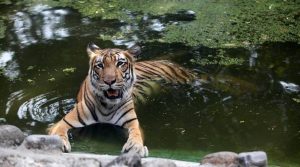
A seven-month-old female tiger cub was found dead under suspicious circumstances at Bandhavgarh Tiger Reserve.
- Bandhavgarh Tiger Reserve is located in the Umaria district of Madhya Pradesh.
- It is spread over the Vindhya hills.
- Bandhavgarh was declared a national park in 1968 and then became Tiger Reserve in 1993.
- It is known for the Royal Bengal Tigers.
- The density of the tiger population at Bandhavgarh is the highest known in India as well as in the world.
- The vegetation of Bandhavgarh is specially filled with Sal forestin the valleys, and Bamboo stretches on the lower slopes of the region.
- The important prey species consists of chital, sambhar, barking deer, nilgai, chinkara, wild pig, chowsingha, langur and rhesus macaque.
- Dependent upon them are the major predators like tiger, leopard, wild dog, wolf and jackal.
Mushkbudji Rice : Geographical Indication (GI) Tag

Mushkbudji Rice received the Geographical Indication (GI) tag.
- Mushkbudji Rice is short bold aromatic rice grown in higher reaches of Kashmir valley.
- The cooked rice is unique and possesses a harmonious blend of taste, aroma and rich organoleptic properties.
- It is mainly is grown in areas of Sagam, Panzgam and Soaf Shali of district Anantnag and Beerwah belt of district Budgam.
- The consumption of aromatic rice in Kashmir has now been limited to special occasions, marriages, and festivals.
Geographical Indication Tag:
- It is a sign used on products that have a specific geographical origin and possess qualities or a reputation that are due to that origin.
- This is typically used for agricultural products, foodstuffs, wine and spirit drinks, handicrafts and industrial products.
- The Geographical Indications of Goods (Registration and Protection) Act, 1999 seeks to provide for the registration and better protection of geographical indications relating to goods in India.
- This GI tag is valid for 10 years following which it can be renewed.
Increase In The Number Of Elephants:
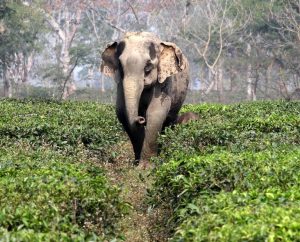
Estimates suggest that the number of elephants in Karnataka and Tamil Nadu has increased.
- Karnataka’s elephants increased from 6,049 in 2017 to 6,395 in 2023, the reports showed.
- In Tamil Nadu, there was a rise to 2,961 in 2023 from 2,761 in 2017.
- Meanwhile, in Kerala, the population has dropped from 9,026 to 4,306 in the same period.
- The overall elephant population for the three states was registered to be 13,662 in 2023, compared to 17,836 in 2017.
Conservation Status:-
International Union for Conservation of Nature (IUCN) Red List of threatened species:
- African Forest Elephant– Critically Endangered
- African Savanna Elephant– Endangered
- Asian Elephant– Endangered
- Convention of the Migratory Species (CMS): Appendix I
- Wildlife (Protection) Act, 1972: Schedule I
Coastal Aquaculture Authority (Amendment) Bill, 2023:

The Coastal Aquaculture Authority (Amendment) Bill, 2023, recently passed by Parliament.
- These amendments seek to address ambiguities, streamline administrative processes, and integrate emerging aquaculture practices.
Major Provisions Related to Coastal Aquaculture Authority (Amendment ) Bill, 2023:
- The amendments aims to bring all coastal aquaculture activities under the purview of the Act, removing ambiguities between different aspects of coastal aquaculture.
- The amendments acknowledge the evolution of environmentally friendly aquaculture practices beyond shrimp farming, incorporating methods like cage culture, seaweed culture, marine ornamental fish culture, and more.
- These practices align with the evolving landscape and offer substantial revenue and employment opportunities for coastal communities.
- Establishments like hatcheries, Broodstock multiplication centers (BMC), and Nucleus Breeding Centres (NBC) are now permitted to operate within 200 meters from the High Tide Line (HTL).
- The amendment aims to address previous uncertainties arising from the interpretation of Section 13(8) of the original CAA Act of 2005, which had excluded coastal aquaculture from CRZ regulations.
- The amendments replace the stringent provision of imprisonment with civil penalties for unregistered coastal aquaculture activities.
- This shift towards civil instruments aligns with modern regulatory practices.
- The amendments introduce provisions for modifying certificates of registration in case of changes in ownership or activity size.
- The amendments empower the Coastal Aquaculture Authority to establish standards for emission or discharge of effluents from aquaculture units, holding owners accountable for adhering to these standards.
- The amendments uphold the ‘Polluter Pays Principle,’ mandating aquaculture unit owners to bear the cost of any environment-related damage or demolition assessed by the Authority.
- The amendments prohibit coastal aquaculture activities in ecologically sensitive areas or areas with significant geo-morphological features, enhancing protection for vulnerable ecosystems.
- By explicitly prohibiting the use of antibiotics and pharmacologically active substances, the amendments prioritize the health of aquatic ecosystems and promote environmentally conscious practices.




